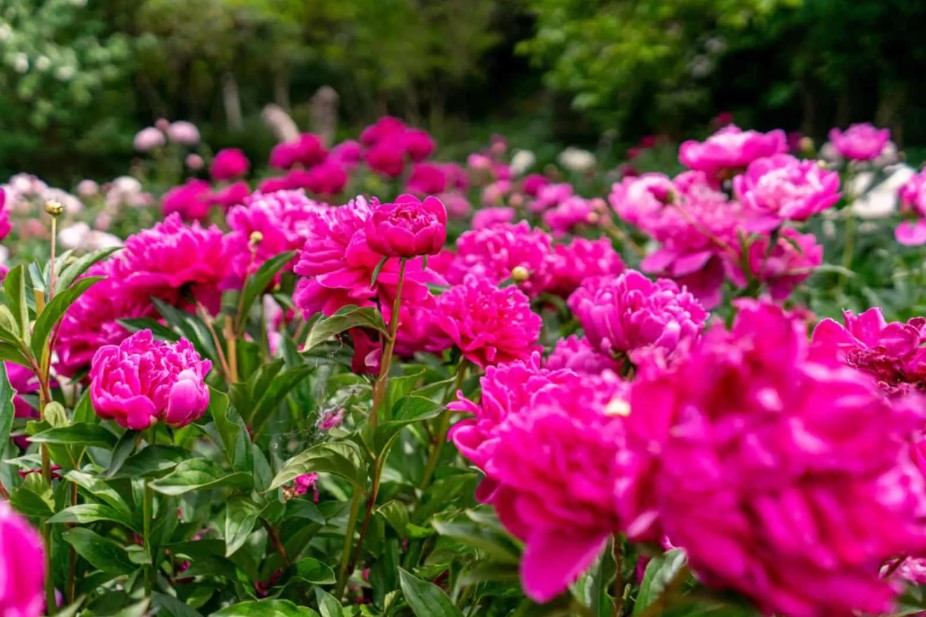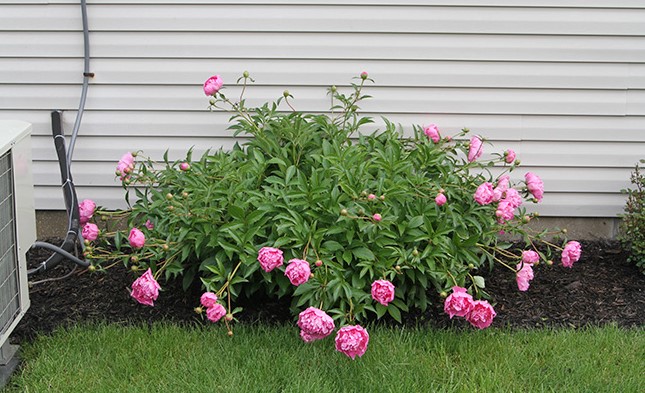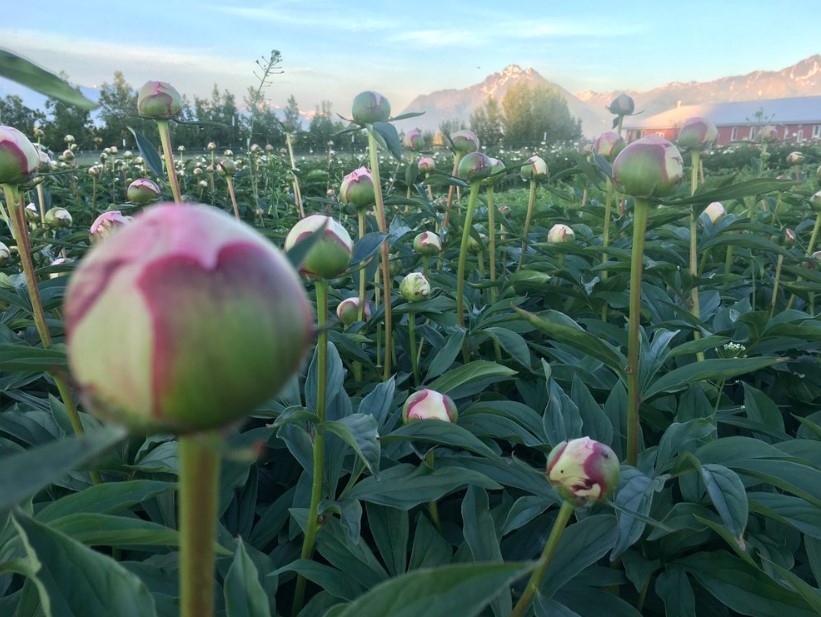The peony growth stages are interesting, from the very first sprouting of plants to vibrant blooms. In understanding each phase of its nuances, one should know how to care for these lovely flowers to their fullest bloom. Are you ready to explore the intriguing dance of nature through the peony’s developmental stages?
Overview of Growth Stages of Peony
Peonies are known to be flowers with unique beauty and colors. These flowers go through growth phases, which to gardeners around the world are a sight to see. A peony is a perennial flower that calls for one knowing its life cycle if it’s to be taken care of and grown rightly. The growth phases of peonies cover a curve of expectancy, right from sprouting to luxuriant blooms down to eventual dormancy.
The initial stage of peony growth consists of tender shoots that break through the soil. This is the period of preparation for a strong vegetative development, where healthy foliage is developed to accommodate the next phase of flower production. During this growth phase, the peony plant develops its leaves and stems, laying the framework for future flowering.
With the formation of flower buds, the peony assumes a promising appearance for up-and-coming bloom. Budding of complex buds reveals that a plant is going to unfurl fascinating flowers. Gradual opening of petals until it reaches peak bloom time, when it is all glory, with each flower elegant and charming as if casting spells of beauty on fascinated onlookers, is a dramatic sight.

Initial Growth Phase of Peonies
While peonies start their growth, they are developing a root system where they are setting roots for healthy and vigourous flowering and subsequent growth. This is a very critical point in the whole life cycle of growth, health, and vigour in a peony plant. Therefore, adequate watering is recommended during the growth-starting phase in order for the roots to attain enough moisture to grow and establish well.
Preparation of soil at this tender age is of prime importance, as peonies need well-draining organic-rich soil. Compost or well-rotted manure added to the planting area will not only provide vital nutrients but also help in soil structure and, therefore, better root growth. Another consideration is sun exposure: full sun to partial shade, having a minimum of 6 hours of sun per day for effective development at this early stage.
Regular attention to the peony plants during this early growth period is crucial as gardeners can quickly observe potential problems. Removal of weeds near the plant’s base and the availability of a sturdy support system prevent unnecessary root damage to the newly forming roots. Care at this vital growth period allows the gardener to lay the groundwork for future years of healthy growth and heavy blooming of the peonies.
Vegetative Growth Stage
In the vegetative growth of peonies, it puts its energies into building foliage, not flowers. This is important and necessary for root development and a healthy leaf canopy. They put their energy into growing lush leaves and sturdy stems where future flowers will bloom on top.
The vegetative stage of growth requires well-draining soil and sunny locations with regular watering. Peonies also thrive on applications of a balanced fertilizer, which promotes good leaf growth. In general, this period falls between early spring and the beginning of summer; a plant should continue to gather strength, growing in size to prepare for future blooms.
Prune peonies in the vegetative growing phase only to remove dead and injured leaves to promote new growth. This is a fine balance between promoting a leafy growth and setting up the plant for the bloom cycle that will occur. Taking care of peonies during this growth period means assuring brilliant flowers along with a healthy plant for several years to come.
Flower Bud Development
The peony growth phases, whereby the flower buds are formed, mark the change of the plant from its vegetative phase to the reproductive phase. This is a very critical stage marked by the appearance of small, rounded buds at the tip of the shoot. These buds swell to develop into the painfully and intricately detailed flowers which are just about awaited.
The flower buds are very sensitive and are impacted by the health of the plant, nutrient availability, and environmental conditions. Enough sunlight, water, and nutrients guarantee the establishment of a strong structure with abundant buds. Proper maintenance at this stage will definitely be impacted by the appropriate fertilizing and watering to build bigger and better-quality buds.
The peony growers are ever eager to perceive the development of flower buds on their peonies, signaling the onset of the blooming period. It is very pleasing for a grower to notice the bud swelling and taking shape; therefore, the plant finishes its growth and soon unfolds its tremendous flowers, which are stunningly captivating in an eye-catching way. Due care and proper nourishment at that tender stage are sure to bloom into a magnificent floral display, tall to its willfulness of survival and beauty in nature.
Blooming Stage
The blooming stage for peonies is a very intriguing transformation they go through. It takes them from tight buds all the way up to magnificent blossoms. This crucial stage can be divided into two main stages:
- Unfurling of Peony Flowers: Initially, the tightly packed petals gracefully unfurl, revealing the vibrant colors and intricate patterns characteristic of peonies. This process is a sight to behold, signifying the imminent peak bloom.
- Peak Bloom Period: This is the zenith of the blooming stage when the peony flowers are in full splendor. The blooms are at their largest, most vibrant, and emit a delightful fragrance, attracting pollinators and onlookers alike.
Blooming is such a transitional, enchanting stage in the life cycle that takes the cost of patience from the gardeners but pays them back with scenes of breathtaking beauty. Therefore, this moment needs to be preserved with proper care for the blooms so its beauty may last longer. Thus, an optimal environment in the blooming stage is highly essential for good health and longevity.
The moment when petals begin to drop and blooms are past their prime is a time when transition into the post-bloom stage should take place. Deadheading spent flowers, fertilization, and pragmatic pruning practices not only ensure the preparation of peonies for successive growth phases but also a generally healthy life course.
How Peony Flowers Unfold
The petals open during the unfolding of the peony flowers-an extremely slow process within which the flowers produce a striking transformation, revealing tightly closed buds into an explosion of color and full bloom. In their tender nature, each petal unfolded to expose a certain pattern and color inside, so typical of peonies: gentle temptation for human admirers as well as for pollinators.
These flowers, while in bloom, lure many different pollinators with nectar and their sweet fragrance. It is at this stage that the pollination process easily takes place because open flowers provide good access to the reproductive parts of flowers by pollinators, which enhances fertilization. An opened peony flower is a very important phase in its life cycle and expresses the traits of liveliness and growth.
It is a sight to behold, the unfolding of each petal into the full, round shape that is the peony bloom. To observe peonies as they unfurl can be quite spectacular, seeing nature’s design and natural beauty in one of the most favored flowers of the garden. This stage is the culmination of the life cycle of the peony bud as it reaches its full potential, alive with color and vibrancy-a true masterpiece of nature and the life cycle.

Peak Bloom Period
The Peak Bloom Period is the time in which the peonies bring forth their full beauty into view. This is commonly at the height of the entire time of bloom, after which it can gallantly hang on in bloom in the garden scene. At this time, the flowers are large, colored, sweet-smelling, and attracting bees, and other pollinators, therefore a picturesque sight.
Its key features include:
- Bursting clusters of fully opened, velvety petals.
- Rich and diverse hues ranging from delicate pastels to deep, saturated tones.
- Improved foliage and overall plant vigor, reflecting the health and vitality of the peonies.
- Increased activity of pollinators as they are drawn to the alluring scent and bright colors of the blooms.
As it is a very short-lived spectacle, most of the time, this fleeting beauty is usually recorded by photography or taken in by the viewer for the general spectacle that it presents. It is also a sign that the peony growth phases have completed with success, culminating into a spectacular and pleasing sight for both growers and onlookers alike.
Post-Bloom Care and Maintenance
Immediately after the beautiful flowering of peonies, one must adopt post-blooming care and maintenance to ensure healthiness and continuance in growth for these plants. One of the key things you do to help the plant divert energy to root development and next year’s blooms is deadheading spent flowers. You allow the plant to look neat faster, and prevent seed setting by taking off the withered blooms in quick time. This nudges the peony to concentrate on vegetative growth.
Besides, fertilizing post-blooming helps in nourishing the entire plant. The further application of a balanced fertilizer with high phosphorus formulation essentially promotes root development and bud generation, forming a base for good flowering during subsequent seasons. Finally, the pruning back of leaves after blooming keeps vigor under control and removes diseased or damaged portions that help in maintaining clean and disease-free conditions for good growth.
Care after blooming is, however, still an integral part of a peony’s life cycle. Proper watering and mulching will not only protect the roots from extreme weather conditions but allow the plant to live through winter as it goes into dormancy. Good post-bloom care helps you keep peony plants for longer and more vibrantly, so it pays to prepare for the next bloom seasons.
Deadheading spent flowers is another vital part of the peony care that ensures continuous blooming. Deadheading simply means taking away the wilted and faded flowers from the plant to enable it to focus more on growth and production of new flowers. Continuous deadheading of spent flowers will keep the peony plant at its best and encourage it to produce even more flowers.
Deadheading spent flowers is a rather simple process. Find the flower stem below the bloom that has passed its prime, and then cut it back just above a healthy leaf node or set of leaves. The purpose of this is to stop the seeds from being produced on the plant and allowing it to divert attention to other newer buds. For maintaining healthiness and looking their best, deadheading should be done quite frequently during the blooming period.
On removing dead blooms in time, this will prevent the peony plant from wasting any of its valuable energies on seed formation. This shifting of energy guarantees that the plant focuses more on root and foliage development, which would eventually give way to stronger blooms in the succeeding season. This factor does not only affect the growth in the current bloom period but also paves ways for future development and health of the plant.
That said, including deadheading in your regular peony care routine will further help increase the longevity and vigors of your plant. This practice keeps the garden tidy, generally looking pleasant, besides being an essential practice for maximum flowering potential. Therefore, with proper deadheading, you can expect to have an ultimate display of peonies in bloom throughout the season.

Fertilization and Pruning
Basic practices involved in maintaining peonies healthy and vigorous include fertilization and pruning. Fertilization will give the plants their much-needed nutrients to sustain a healthy growth and profuse flowering. A balanced fertilizer with a higher middle number containing phosphorus encourages healthy root development and promotes peony flowers.
Pruning peonies enables these flowers to maintain their shape and structure, improves air circulation, and helps prevent infection of disease in the plants further. Deadheading is the simple removal of spent flowers, helping the plant to expend its energies on new growth and flower production. Regular pruning prevents overcrowding of the plants, which may bring diseases and pest infestation to them.
When fertilizing peonies, a slow-release fertilizer in early spring is best prior to new growth. Organic methods of fertilization may also be used such as compost, but these again will only benefit the overall health of the soil over long periods. Prune the plant by cutting stems back to ground level in late fall or early spring to keep it tidy and to promote new growth. All pruned material must be disposed of properly to help prevent diseases from taking hold.
With proper fertilizing and pruning, peonies will give flowers year after year by caring for your plants. These practices bring generally robust health to peonies as they are long-lasting and can be an attractive accompaniment in any garden landscape.
Dormancy Phase
Normally, peonies go into their dormant stage and rest during late autumn and early winter. The foliage may die off as if the plant is dormant above ground. It’s a critical stage because it allows the plant to hoard its energy for the following growing season.
Although peonies have the appearance of being dormant at this state, the root structure is still active about 1-2 inches beneath the soil surface. At this point in growth, it is critical not to disturb the roots. A light coverage of mulch is placed on the peony not only to retain moisture but to safeguard the plant from extreme cold temperatures and fluctuations.
Proper care during dormancy provides the foundation necessary for good growth during the following season. It is, therefore, important to check on the plants from time to time and make such adjustments as may be required to make sure proper protection and nutrition are well provided. The basis of peony care, in understanding and respecting this resting period, will help in the long-term health and vigor of these plants.
Care and maintenance after peonies have finished blooming are very important to the health and vigor of the plant. The two operations, now that flowering is done, are of importance: deadheading spent flowers. In this process, one removes the faded blooms to encourage new growth and prevent energy from being used on seed production. By regularly deadheading your peonies, you ensure a longer blooming season and a generally healthier plant.
Besides deadheading, fertilization and pruning will also help your peony in its post-blooming stage. You could fertilize your plants with a balanced fertilizer, for example, to give them those needed nutrients for healthy growth and future blooms. Pruning will be important, removing diseased or damaged foliage to improve airflow and shape the plant for maximum growth. Proper care during this after-bloom phase paves the way for the next year’s bloom season and overall plant health.
As your peonies move into their dormancy stage, leave them be to recharge for the seasons ahead. The plant will redirect its energy to the roots now, storing it and getting it ready for winter. Proper mulching and cover against extreme weather conditions will help ensure the survival of your peonies through the months of dormancy. In providing for your peonies post-bloom and into dormancy, you’ll create a plant ready to bloom beautifully next season and into the future.
Therefore, by the time these peonies have started to exhibit their beauty and strength through their different growth phases, it becomes quite clear that this is, in fact, one very rewarding task when it comes to taking care of such wonderful flowers. Knowing how to look after the subtlety of each phase enriches not only the gardening experience but also makes sure that the botanical jewels thrive. Giving this plant its full potential, constituting a spectacle of color and elegance in our garden, peonies require proper attention to their growth stages, from initial sprouting through the dormancy phase.
Indeed, knowing the peony growth stages and caring for peonies after they are done flowering is one of those processes that work in concert with nature’s rhythm. Let this knowledge follow you as you work with these garden favorites, their subtle changes inspiring and delighting you, season after season.
